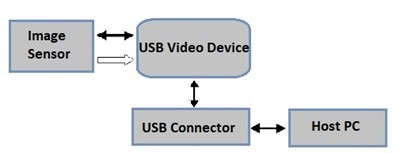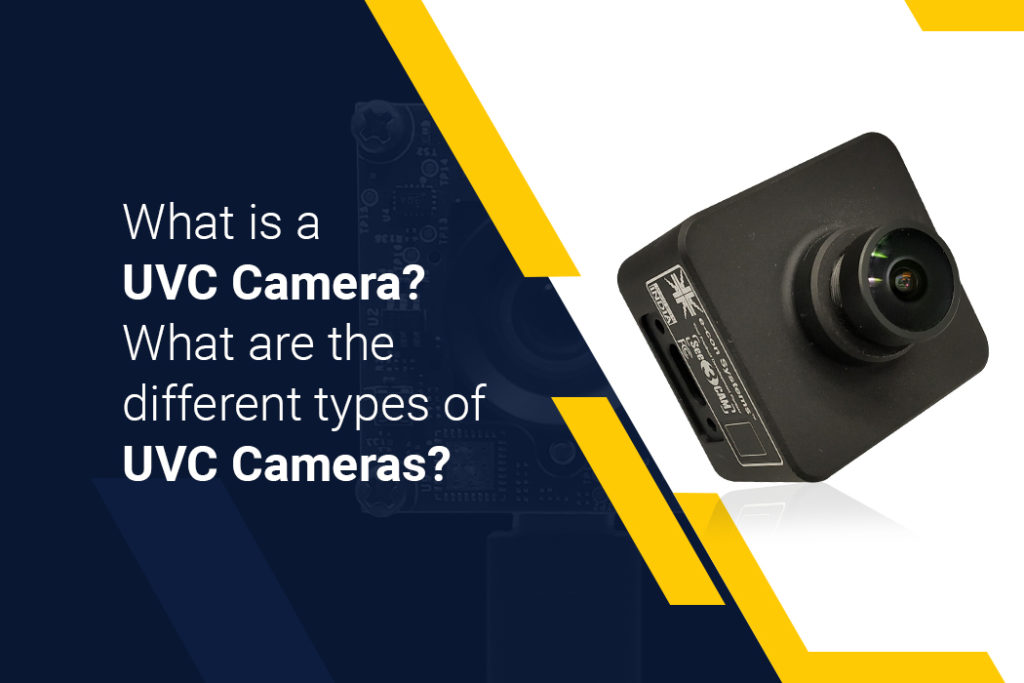This blog post was originally published at e-con Systems’ website. It is reprinted here with the permission of e-con Systems.
AMRs (Autonomous Mobile Robots), smart signages, barcode scanning devices, surveillance systems, industrial handhelds, etc., are changing how businesses operate and connect with people. And embedded vision cameras play a vital role in enabling these devices to ‘see’ their surroundings. Cameras help identify, observe, and analyze objects in a target scene while generating valuable video and image data. Such video streaming applications must be equipped with high bandwidth and high image quality camera modules that can be easily integrated with the remaining components of the embedded device.
Among the various camera types used in embedded vision, UVC-compliant USB cameras have emerged strongly as the right choice for many applications owing to their bandwidth, reliability, and ease of integration. They power embedded vision devices such as biometric & access control systems, document scanners, airport kiosks & digital signages, skin scanners, telepresence robots, and more.
In today’s blog, let’s learn what a USB UVC camera is, how it works, and the key differences between USB3 cameras and USB2 cameras. We will also do a quick comparison of the USB 3.0 interface with MIPI and GMSL interfaces.
What is a UVC camera?
UVC cameras (USB video class) are USB-powered devices that incorporate a standard video streaming functionality – connecting seamlessly with the host machines. There are standard and class-specific descriptors – data structures used to describe a USB device’s capability. The latest version of the USB video class specification is UVC 1.5. The ensemble of all the class-specific video control (VC) unit/terminal descriptors fully describes the video function to the host.
The block diagram of the USB video class application is shown below:

Figure 1: Block diagram of USB video class application
Major benefits of UVC cameras
There is no surprise why USB UVC cameras are one of the most popular types of cameras used in embedded vision applications. Given below are some of the advantages of using a UVC camera in your embedded vision device:
- Supports multiple video formats such as YUV, MJPEG, MPEG-2 TS, H.264, DV, and more.
- Works automatically with the system-supplied driver – eliminating the need for an external driver.
- Leverages an inbuilt generic class driver to control the video function.
- Ensures greater flexibility to support multiple video resolutions, formats, and frame rates – thereby influencing the bandwidth negotiation between the device and the host.
Maximum theoretical bandwidth of USB cameras
With embedded vision applications becoming more demanding in terms of resolution and frame rate, USB cameras had to evolve over time to cater to higher performance requirements. Owing to this, they grew in bandwidth every time there was a new version available. The below table illustrates the evolution of USB in terms of their versions and corresponding bandwidths:
| USB 1.0 | 1.5 Mbps Low Speed |
| 12 Mbps Full Speed | |
| USB 2.0 | 480 Mbps High Speed |
| USB 3.0 | 5 Gbps SuperSpeed |
| USB 3.1 | 10 Gbps SuperSpeed+ |
| USB 3.2 | 20 Gbps SuperSpeed+ |
| USB 4 | 40 Gbps |
Table 1: Maximum theoretical bandwidth of USB across generations
Updated naming convention of various USB releases
As the USB interface evolved, there have been changes in the naming convention as well with multiple releases. PFB the details of the same:
- USB 3.0 is now USB 3.2 Gen 1 (SuperSpeed USB) – with a maximum throughput of 5 Gbps.
- USB 3.1 is now USB 3.2 Gen 2×1 (SuperSpeed+ USB 10 Gbps) – with a maximum throughput of 10 Gbps.
- USB 3.2 is now USB 3.2 Gen 2×2 (SuperSpeed+ USB 20 Gbps) – with a maximum throughput of 20 Gbps.
USB 2.0 cameras vs. USB 3.0 cameras
Though USB 2.0 cameras are very popular, engineers face a lot of challenges while designing one. These include:
- HD video with bandwidth limitations.
- Image quality degradation.
- Expensive compression components.
- Lack of small form factor camera designs.
- Extra engineering effort and design time.
However, all these challenges can be overcome by upgrading to a USB 3.0 camera. To understand the key differences between the two interfaces, please have a look at the below table:
| Comparison parameters | USB 2.0 | USB 3.0 |
| Hi-speed USB | Superspeed USB | |
| Bandwidth | 480 Mbps | 5 Gbps |
| Compression | HD video on USB 2.0 requires compression which degrades image quality | USB 3.0 enables HD video without compression |
| Current | USB 2.0 delivers 500 mA | USB 3.0 delivers 900 mA |
| Communication | One-way communication | Two-way communication |
| Number of wires | Four | Nine |
Table 2: USB 2.0 vs USB 3.0
In short, USB 3.0 operates 10X faster than USB 2.0 and distributes 1.8X more power to bus-powered devices than USB 2.0. It’s also backward compatible with USB 2.0.
There are other interfaces like MIPI CSI-2, GMSL, and GigE used today to meet the growing needs of new-age applications. Let us also find out the similarities and differences between the USB 3.0, MIPI CSI-2, and GMSL interfaces.
| Features | USB 3.0 | GMSL | MIPI CSI-2 |
| Bandwidth | 5 Gbps | 6 Gbps | 5 Gbps |
| Cable length | <5m | 15m | <30cm |
| Space requirements | High | High | Low |
| Plug-and-play | Supported | Not supported | Not supported |
| Development costs | Low | Medium to high | Medium to high |
Table 3: USB 3.0 vs GMSL vs MIPI CSI-2
To understand the differences between USB cameras, MIPI cameras, and GMSL cameras, we recommend you to have a look at the below articles:
You could also read the article What is a MIPI camera? How does MIPI camera work? if you are interested in learning in detail about MIPI cameras.
USB 2.0 and USB 3.0 cameras developed by e-con Systems
e-con Systems, with over 18 years of experience, is a market leader in developing and deploying world-class USB 2.0 and USB 3.0 camera solutions. We were also the first company in the world to launch a UVC compliant camera. Our USB UVC cameras can be customized to suit all your imaging needs without compromising quality and performance. Please visit the below links to have a look at our complete portfolio of USB 2.0 and USB 3.0 cameras:
You could also visit the Camera Selector page to get a view of e-con’s complete camera portfolio which includes MIPI, GMSL, and parallel cameras as well.
We hope this blog helped you get the full picture of UVC cameras and their features. If you are looking for help in integrating USB cameras into your devices, please write to us at [email protected].
Prabu Kumar
Chief Technology Officer and Head of Camera Products, e-con Systems


